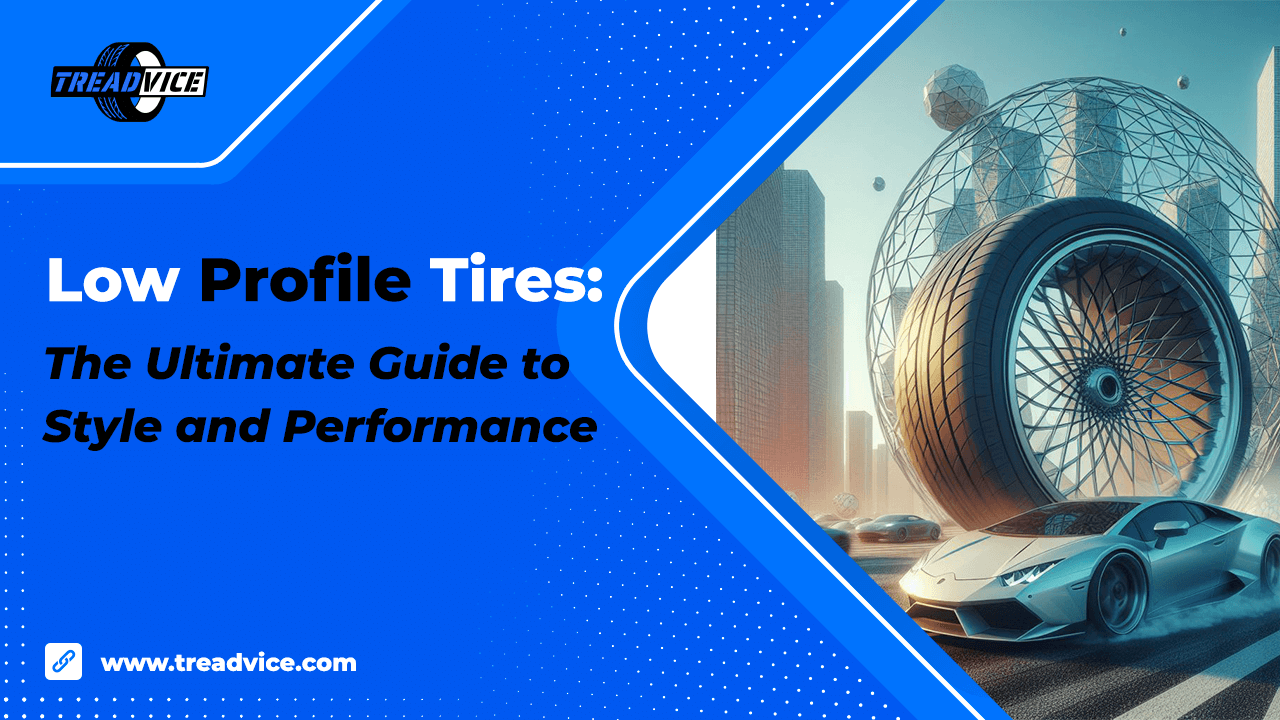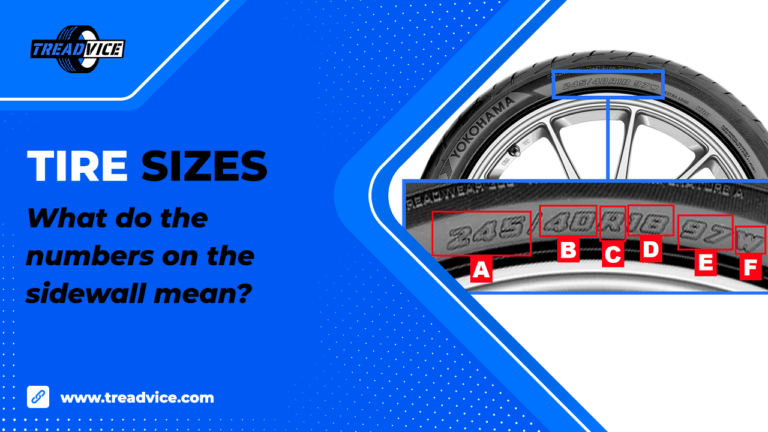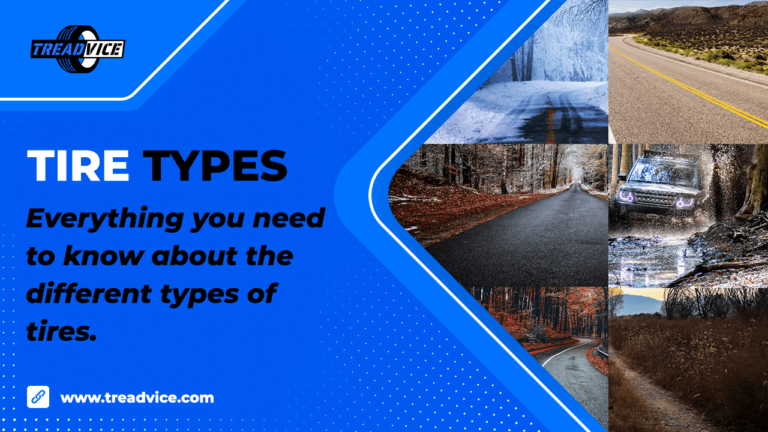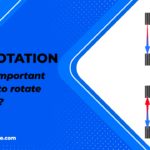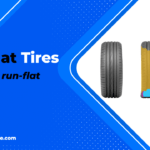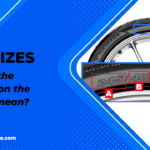Have you ever come across low-profile tires? These are specialized tires crafted exclusively for cars, and they boast some pretty amazing features. What’s cool about them is their shorter sidewall. The sidewall is the part that sits between the wheel and the portion of the tire that connects with the road, known as the tread. With low-profile tires, this sidewall is significantly shorter, meaning there’s less rubber between the wheel and the road.
Now, what makes this even more fascinating is that these tires are a real delight for folks who have a soft spot for sporty or high-performance cars. Why, you might ask? Well, it’s because they offer exceptional control and handling when you’re zooming down the road at high speeds or maneuvering through those tight turns. The reduced sidewall makes the tire firmer, allowing it to respond swiftly to your steering. This translates into a feeling of being one with the road like you’re truly in command of your car.
But it’s not just about performance; low-profile tires also deliver a sleek and modern look. This is precisely why they are a hot favorite among those who want their vehicles to exude a sporty and stylish aura. It’s like giving your car a style upgrade!
Table of Contents
What is considered a low profile tire?
To understand what a low profile tire is, first we need to speak about a tire size specific property, the aspect ratio, as the aspect ratio of a tire determines its profile.
Aspect ratio is basically the ratio of the tire’s sidewall height to its width. Tires with an aspect ratio of 50 or lower are considered low-profile.
Visual Example:
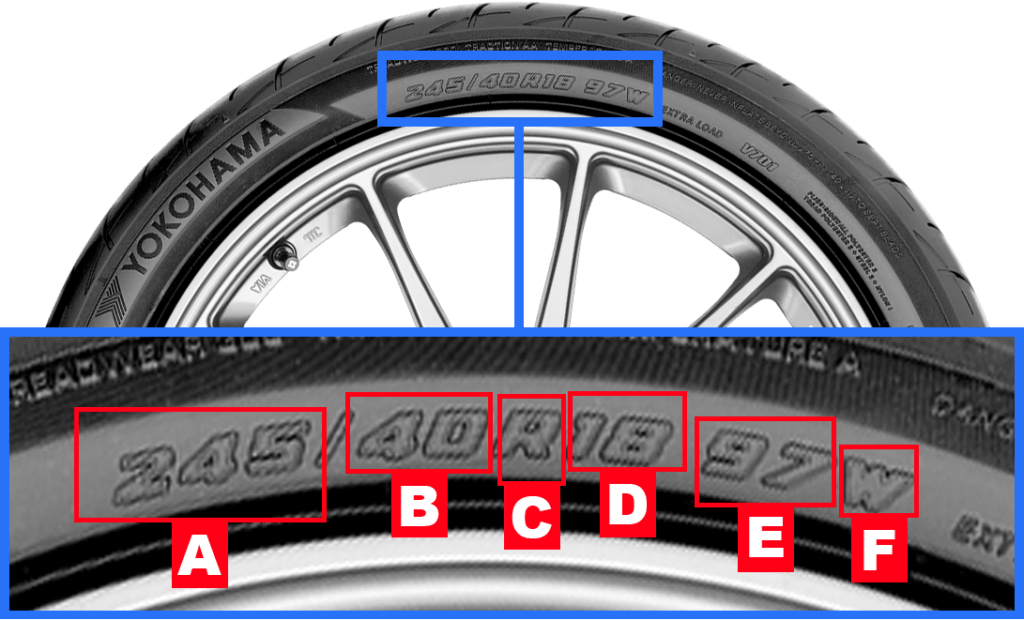
Illustration: Tire size components on Yokohama Advan Fleva V701
- A → Tire Width: 245 millimeters
- B → Aspect Ratio: 40 (40% of the tire width which in this case is equal to 245mm x 0.40 = 98mm)
- C → Construction Type: Radial
- D → Rim Diameter: 18 inches
- E → Load Index: 97 ( max 730kg or 1610 lbs / tire)
- F → Speed Rating: W (up to 270km/h or 168mph )
In this particular case, the Aspect Ratio is 40, which means that this tire is a low-profile tire.
The History of Low-Profile Tires
The history of low-profile tires is intriguing. It’s a tale of innovation, style, and top-notch performance in the automotive world. These tires, distinguished by their shorter sidewalls in comparison to regular ones, have an illustrious past and a significant influence on the industry.
Low-profile tires made their debut in the mid-1900s, primarily associated with racing. They were designed to provide cars with better grip, enabling them to navigate sharp turns with finesse and deliver exceptional performance on the racetrack. As a result, they became the go-to choice for professional racers.
As time passed, these low-profile tires began to grace sports cars. The allure wasn’t just about performance enhancement; they also bestowed a cool and sporty appearance upon vehicles. These tires bestowed cars with a wider and more contemporary look, and this style became emblematic of high-performance vehicles. It’s no wonder that car enthusiasts couldn’t get enough of them. The fusion of style and performance is what has propelled them to fame in the car world.
Low-Profile Tires versus Regular Tires
Low-profile tires, featuring shorter sidewalls, lend a sportier appearance to cars and provide better control, especially during sharp turns. However, there is a trade-off. They can lead to a slightly firmer and noisier ride. While these tires are cherished by high-performance car aficionados, they do require careful handling on uneven roads, as they are more susceptible to damage.
On the flip side, regular tires are akin to a cozy couch on wheels. They cushion the ride by absorbing the bumps on the road and maintaining a quieter environment. These tires are ideally suited for everyday driving and are built to last. Nevertheless, they may not handle extremely sharp turns as adeptly as low-profile tires. So, when selecting your tires, it’s akin to a choice between comfort and style.

Illustration: A low-profile tire ( Bridgestone Potenza S007A with size: 245/40/RF18 ) vs a regular tire ( Goodyear Wrangler Workhorse AT with size: 265/70/R17 ) aspect ratio comparison.
Low-Profile Tire Types
Low-profile tires offer a plethora of options, each designed to suit different driving scenarios and road conditions:
Touring Low Profile Tires
These tires offer a balance between performance and comfort, excelling in handling while prioritizing a smooth and noise-free ride. They are a superb choice for everyday driving, particularly in luxurious touring cars.
Performance Low Profile Tires
Tailored for sporty driving, these tires are designed for precise handling and rapid responses on the road. Their specialized tread pattern ensures a strong grip in both dry and wet conditions, making them the preferred choice for enthusiastic driving and high-performance vehicles. However, they may compromise a bit on comfort.
High-Performance Low Profile Tires
The ultimate choice for sports cars and supercars, these tires focus on delivering unrivaled handling, exceptional grip, and the capability for breathtaking speeds. You’ll often find them on racing or high-speed track cars.
Summer Low-Profile Tires
Designed for peak performance in hot weather, these tires feature specialized tread compounds that provide top-notch grip on both dry and wet surfaces. However, they are not suitable for cold or snowy conditions. They are a favorite choice for high-performance and sports cars thriving in warmer climates.
Winter Low-Profile Tires
Also known as snow tires, these are your go-to choice for cold and snowy weather. Equipped with special rubber compounds and tread patterns, they offer superior traction on icy and snowy surfaces, significantly improving safety when driving in wintry conditions.
The Advantages of Low-Profile Tires
Low-profile tires offer several advantages that cater to different driving preferences and needs such as:
- Better Handling: Their shorter sidewalls ensure a firmer grip on the road, especially during sharp turns and high-speed driving. This makes your car feel connected and enhances your driving experience.
- Sporty Look: Low-profile tires transform the appearance of your car, giving it a sporty and aggressive edge. They are a hit among car enthusiasts and those who want their vehicles to turn heads.
- Sharper Steering Response: With reduced sidewall height, low-profile tires deliver quicker steering responses, adding agility and precision to your driving, whether you’re navigating traffic or enjoying a winding road.
- Improved Braking: These tires provide increased traction and road contact, resulting in shorter braking distances. This enhances safety by enabling your car to stop more effectively.
- Fuel Efficiency: Surprisingly, low-profile tires can enhance fuel efficiency due to reduced sidewall flex, leading to less road resistance and better gas mileage.
- Extra Space for Customization: The lower profile of these tires creates extra space in your car’s wheel wells, allowing for larger brake systems or bigger wheels. This customization appeals to many car enthusiasts looking to enhance braking performance or style.
- Customization Options: Low-profile tires come in a wide variety of designs, sizes, and tread patterns, offering diverse choices to match various tastes. Whether you prefer a sporty and bold look or a more understated appearance, you’ll likely find a set of low-profile tires that perfectly align with your preferences. It’s all about striking the right balance between performance and style.
- High-Speed Stability: Low-profile tires are the perfect choice for high-speed driving. Their stiffness and improved grip ensure stability, reducing wobbling or swaying and allowing you to confidently cruise at higher speeds.
The Disadvantages of Low-Profile Tires
Low-profile tires have gained popularity for their unique blend of style and performance. While they offer several advantages, they also come with some drawbacks such as:
Reduced Comfort: Low-profile tires come with a shorter sidewall, which means they offer less cushioning and shock absorption. As a result, your ride may become less comfortable, especially on bumpy or uneven roads. You and your passengers will feel potholes and road imperfections more vividly, which can be quite jarring.
Increased Vulnerability to Damage: The shorter sidewall of low-profile tires makes them more susceptible to damage from road hazards such as potholes and curbs. Even minor impacts can result in bent rims or sidewall damage, which can be expensive to repair or replace.
Noise and Vibration: Low-profile tires tend to generate more road noise and vibrations, leading to a noisier and less comfortable driving experience.
Less Traction in Snow and Ice: These tires have a smaller contact patch with the road, which can limit traction, particularly in snowy or icy conditions. This can make winter driving more challenging, often necessitating the use of dedicated snow tires or tire chains for improved performance and safety.
Increased Cost: Low-profile tires are generally pricier than their standard counterparts. Furthermore, due to their heightened vulnerability to damage, you might end up spending more on maintenance and replacements over time.
Ride Quality: The stiffer sidewalls of low-profile tires can adversely affect overall ride quality. They transmit more of the road’s imperfections and bumps to both the driver and passengers, resulting in a less comfortable journey.
Limited Availability: Low-profile tires may not be as widely available as standard tires, limiting your options when it comes to replacing them. This can lead to longer wait times and higher costs if you need to replace a damaged tire.
Impact on Fuel Efficiency: Low-profile tires may offer benefits in terms of reduced rolling resistance, potentially improving fuel efficiency. However, this benefit can be offset by the increased weight of larger rims, leading to mixed effects on overall fuel economy.
Frequently Asked Questions (FAQs)
Low-profile tires are popular primarily because they offer a sleek and sporty appearance, improved performance with better handling and grip, and a wide range of customization options.
They are often used on high-performance and luxury cars, appealing to drivers who want a combination of style and an enhanced driving experience.
Advancements in tire technology have addressed some previous drawbacks, making them more comfortable for everyday use. These tires are also associated with motorsports and racing, further boosting their appeal among car enthusiasts.
The choice of the “best” tire profile comes down to your specific needs and the conditions you typically drive in.
Low-profile tires, with their shorter sidewalls, are fantastic for sporty cars, providing excellent handling and a stylish look.
Regular tires, the ones you’ll find on most cars, strike a balance between comfort and versatility, making them ideal for everyday driving on all sorts of roads.
If you’re driving an SUV or often encounter rough terrains, high-profile tires, with even taller sidewalls, ensure maximum comfort.
Low-profile tires are often perceived as noisier compared to standard or high-profile tires due to several key factors. Firstly, their reduced sidewall height means there is less rubber to act as a cushion, making them less effective at absorbing and dampening road noise and vibrations. This can result in more noise and harshness being transmitted into the vehicle’s cabin.
Low-profile tires are engineered with a stiffer construction to enhance handling and responsiveness. However, this stiffness can also make them more efficient at transmitting road noise directly to the vehicle’s suspension and cabin, contributing to a noisier ride.
Low-profile tires are commonly used with larger wheels, and the larger contact area and increased rolling resistance of these wheels can create additional road noise.
The tread design of low-profile tires can be more aggressive and sport-oriented, which can generate more road noise compared to the quieter, conservative tread patterns often found on standard or high-profile tires.
Low-profile tires are also more sensitive to road surface conditions, making them more susceptible to noise on rough or uneven roads.
The quality and brand of the tire play a role as well. Some premium tire manufacturers focus on noise reduction in low-profile tire designs, using advanced materials and tread patterns to minimize noise.
To mitigate the noise associated with low-profile tires, some drivers consider aftermarket solutions, such as noise-reducing insulation or switching to quieter tire models designed for comfort. Achieving a balance between the improved handling and aesthetics offered by low-profile tires and potential noise and harshness is crucial. Drivers who prioritize a quieter and more comfortable ride may opt for standard or high-profile tires with a more conservative tread pattern and a taller sidewall.
Low-profile tires, which have shorter sidewalls and bigger wheels, look cool and can make your car handle better. But there’s a downside. These tires are more likely to get damaged on rough roads.
The problem is that their shorter sidewalls don’t provide as much protection to the tire and wheel. So, if you hit a pothole, curb, or debris on the road, they’re more at risk of getting damaged. These tires are also built to be stiff to help with handling, but this stiffness means that when they hit something hard, the force goes right to the tire and wheel, making damage more likely. They’re also not as good at soaking up shocks from the road because they’re not very flexible.
On top of that, low-profile tires are usually used with larger wheels, which means there’s even less tire to protect the wheel. And if the road is bumpy or uneven, these tires are more likely to get damaged.
To keep these tires safe, it’s important to drive carefully, avoid rough patches, and keep an eye on tire pressure. But if you often drive on rough roads, you might consider using regular or high-profile tires instead. These have taller sidewalls, which provide better protection. The choice depends on your preferences and the kind of roads you drive on.
In most cases, you can use low-profile tires on different types of cars. However, it’s vital to think about factors like your vehicle’s wheel well size, suspension system, your personal driving preferences, and the condition of the roads you typically drive on.
Low-profile tires are well-known for their sporty appearance and improved handling, but they might not be the best fit for cars with limited space in the wheel wells or those with suspensions that can’t handle the firmer ride they offer. To make the right choice, it’s wise to consult with an expert or check your vehicle’s manual to ensure that the specific low-profile tire size matches your car’s design and driving style.
Low-profile tires aren’t just for sporty cars. They can work on different types of vehicles. Here’s a list of car models that can use them:
- Sports Cars: Low-profile tires are a natural choice for sports cars, where they not only enhance handling but also contribute to the sporty appearance.
- Sedans: Many sedans can accommodate low-profile tires, offering an opportunity to achieve a more stylish look while improving handling characteristics.
- SUVs: Certain SUV models, especially those designed for enhanced on-road performance, can be fitted with low-profile tires for a blend of style and sporty driving.
- Crossovers: Crossover vehicles, known for combining elements from SUVs and sedans, can also benefit from low-profile tires. This choice strikes a balance between sportiness and ride comfort.
- Luxury Cars: Low-profile tires are frequently found on luxury vehicles, delivering a smoother and more refined driving experience, in addition to a stylish aesthetic.
- High-Performance Cars: Whether you’re driving a high-performance sedan, coupe, or convertible, low-profile tires are often the preferred tire type due to their superior grip and responsiveness.
Conclusion
The combination of style and performance has made low-profile tires a popular choice in the car world. It’s important to know that these tires aren’t only for sporty, low cars. They can work well on many types of vehicles, making them look better and improving how they drive. Just be sure to check that the size and specifications of the low-profile tires you pick fit your vehicle’s suspension and wheel well properly.
